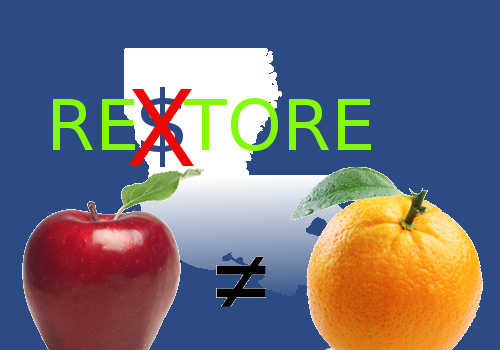By Murray Wennerlund published 3-29-2023 updated 3-29-2023
|
|

By Supervisor published 5-4-2018 updated 7-2-2018

By Supervisor published 5-4-2018 updated 7-2-2018
From my understanding the calculations are done first on paper with no regard to any actual repairs completed to the home that match the guidance provided by Restore (OCD-DRU) under the construction policy.
1. Total Estimate Cost of Repair (ECR)
2. Total Duplication of Benefits (DOB) to include FEMA IHP (Individuals and Household Program) Home Repair Grant.
3. ECR – DOB = GAP
If you agree with the above formula let's continue, if not we need to discuss the formula so I understand what is really going on.
The GAP you owe is presented to you as an amount of money you owe back to the program as a whole. It's not at first literally saying you owe CASH, it's saying you should have at least $X,XXX amount of work completed on your Structure so we are going to deduct that in our financial review.
To this point you have no argument, it is what the funds given to you are to be used for.
The GAP or what is owed now is reviewed based on the amount of work Restore (OCDDRU) claim you have to complete to make your home safe to live in again.
The Calculation is taken from the lowest building grade materials called “Economy Grade” and the lowest federally allow labor rates.
The structural inspection has generated a Scope of Work for you, this scope of work will have the cash value for each item that restore believes needs to be done. There could be mistakes but we are not going to cover that, just take it as accurate numbers.
With your Scope of Work you will need to review what you spent your IHP on, if it was for a new refrigerator then you owe that money, if it was for any appliances you owe that money.
In fact, if you look down your Scope of Work anything you paid for that is not on the list you owe that money.
Once you have identified everything you spent your FEMA IHP Home Repair money on that is not on the OCD-DRU Restore SOW (Scope of Work) you know now just how much more you need to put into your home.
NOTE: If you do not have your Scope of Work then create one or use your insurance adjusters report which will have the same information in it just different dollar amounts. Use the Homeowners Manual version 3.1 to see your allowed materials and labor dollar amounts or download the XLSX file I uploaded with the same prices if it's easier for you.
Once you have determined your total liability to the program and you've been so honest about it your blood pressure is off the chart you are ready for the next phase, helping find methods of reducing the GAP without duplication of any benefits to you.
Your comments should be about how or what we can use to reduce our duplication of benefits by lowering our GAP responsibility.
Example:
I propose that we calculate the difference of materials and labor homeowners had and call it “REAL COSTS A” to identify the actual costs we had after the disaster and before the CDBG-DR Program started.
Taking your material and labor costs and subtracting the approved costs from the OCD-DRU Restore program you have the difference between your actual costs and new unmet needs.
Example: Flooring $2.00 sf x 1,000sf = $2,000 REAL COSTS A , Restore $1.65 sf x 1,000 = $1,650 which leaves a REAL COST A Gap of $350.00.
The GAP amount of $350.00 is due to prices being different which can be declared as additional unmet needs.
It will take time to calculate each item that you have repaired based on post flood prices for material and labor then to compare that to Restore Economy Grade prices for material and labor.
But, if you do you may find you have a justified expense that is not a duplication of benefits based on material and labor prices after the disaster.
If HUD does not want to offer guidance and Restore OCD-DRU does not want to address this method of calculating unmet needs then we have the Louisiana Task Force, State Representatives, Governor, Local City, Parish Government that would all need to publicly give up on you for such a clear oversight the system has made in my opinion.
Discussion: Would the "REAL COST A Gap" formula help you lower your Homeowners Responsibility?
Possible Solution for all other flood and disaster victims:
Nov. 16, 2015 U.S. Senator Charles E. Schumer New York.
HUD will waive "Duplication of Benefits" review for nearly all Super Storm Sandy Victims.
"The people this decision helps are the people who have scraped—and are still scraping—to get by and rebuild their homes, their lives. These are not the people the feds should be knocking on the door of to pay up. They did not profit from this disaster and many of them are still paying for home repairs and will be for a long, long time," said Senator Schumer. "HUD's decision to waive the duplication of benefits policy for so many Superstorm Sandy victims—and the promise that even more could be free of a claw-back—represents a sensible resolution, but more importantly, the right thing to do.